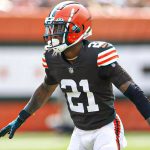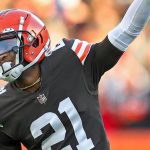The hallowed halls of Cooperstown, New York, hold the legacies of baseball’s greatest players, managers, and pioneers.
Each year, new names are added, immortalizing their contributions to the sport. While every induction class is special, the Class of 1987 holds a unique place, bringing together three distinctly different, yet equally deserving, figures: Jim ‘Catfish’ Hunter, Billy Williams, and Ray Dandridge.
These three legends shared a memorable day on January 14, 1987, when they received the life-changing news of their election to the Baseball Hall of Fame.
Just over six months later, on July 26, 1987, their plaques were officially hung in Cooperstown during the Hall’s annual induction ceremony.
It was a day filled with reflection, celebration, and powerful messages that resonated far beyond the baseball diamond.
A Tale of Two Personalities: Hunter and Williams
The personalities of the two Major League Baseball stars elected that year couldn’t have been more different.
Catfish Hunter was known for taking the mound for “baseball’s most famous teams in the game’s biggest moments” and was a gregarious character who thrived in the spotlight.
He was always ready with a light-hearted joke. As Newsday’s Steve Marcus wrote, “For 15 years, Hunter had a barrel of fun to match his truckload of victories,” noting that his fastball couldn’t match the fast delivery of his tongue, earning him the moniker “the Yankee quipper” when he came from Oakland to New York.
In stark contrast, Billy Williams was soft-spoken and reserved. He excelled for the Chicago Cubs, often playing “in the shadows of popular teammates Ernie Banks and Ron Santo”.
When he received the news of his election, Williams’ initial reaction captured the overwhelming emotion of the moment: “I don’t know whether to laugh or cry,” he said. “It hasn’t sunk in yet. I can truly say it’s one of the most exciting moments of my life.”
Later, posing with framed images of their plaques, Williams’ simple statement encapsulated the shared joy: “I guess the smile on my face tells it all,” he said, adding a phrase of sweet finality for a player who had waited six tries to gain entrance to the Hall, “‘Wait until next year’ is now a phrase of the past.” Hunter, for his part, was elected on his third time on the ballot.
Catfish Hunter: The Anchor of Dynasties
Once Jim ‘Catfish’ Hunter stepped onto the mound, the jovial demeanor transformed into intense focus; he was “all business”.
Hunter’s career was defined by success with legendary franchises. He was a cornerstone of the Oakland A’s dynasty that captured three consecutive World Series titles from 1972 to 1974.
During those three World Series victories, Hunter was magnificent, compiling a combined 4-0 record with a stellar 2.19 ERA.
His individual brilliance was also evident early in his career. On May 8, 1968, Hunter achieved one of baseball’s rarest feats, tossing the American League’s first perfect game in over four decades. Remarkably, he wasn’t just dominant on the mound that day, he also added three hits at the plate in the 4-0 victory against the Twins.
Hunter’s impact wasn’t limited to Oakland. In 1975, he became a trailblazer in the nascent era of free agency.
Declared a free agent on a technicality, Hunter signed a massive 5-year, $3.75 million deal with the New York Yankees, making him the highest-paid player in baseball history at the time and sending “shockwaves through the sport”.
The investment proved well worth it for the Yankees, often dubbed the “Bronx Bombers”. Hunter was instrumental in helping New York capture two long-awaited pennants in 1977 and 1978.
His significance to the Yankees’ return to prominence was perhaps best articulated by Yankees owner George Steinbrenner, who told Hunter upon his induction, “You started our success,” and “You were the first to teach us how to win.”
Hunter’s induction speech was predictably jovial. He was introduced by Commissioner Peter Ueberroth, who humorously noted that “Catfish earned the distinction of playing for (A’s owner) Charlie Finley and George Steinbrenner, which is enough in itself to put a player into the Hall of Fame.”
Hunter followed with his own classic one-liner, reflecting on his pitching career with characteristic wit: “My three brothers taught me how to throw strikes, and thanks to them I gave up (374) home runs in the big leagues.”
Billy Williams: The Sweetest Swing and a Powerful Voice
Billy Williams‘ journey to the Baseball Hall of Fame was, in many ways, “remarkable”. Hailing from tiny Whistler, Alabama, his high school didn’t even have a baseball team.
He even turned down an athletic scholarship to play both football and baseball at Grambling State University.
His opportunity in baseball finally arrived when he filled in for his brother on the semi-pro Mobile Bears team. His talent was quickly recognized, and in 1956, the Chicago Cubs signed him at the young age of 17.
Williams went on to become a fixture in left field at Wrigley Field for more than 15 seasons.
Known universally as “Sweet Swingin’ Billy” for his incredibly polished swing, Williams was a consistent offensive force. He led the National League in total bases three times.
In 1969, he achieved a remarkable feat of durability and consistency, breaking Stan Musial’s NL record for consecutive games played.
Williams was also a perennial threat for the Most Valuable Player award, finishing second in MVP voting twice: first in 1970 after collecting 205 hits and 137 runs scored, and again in 1972 after posting a league-leading .333 batting average.
A longtime Cubs fan captured the effortless beauty of his hitting: “When he was hot, it was as though they had put a giant tee in front of him with the ball on it, and said, ‘Here Billy, hit it,’” the fan observed, adding, “The ball came off his bat like a drive from a golf club.”
While reserved in his everyday interactions, Billy Williams delivered a profoundly passionate speech at his Hall of Fame induction ceremony.
At the time, he was actively seeking a managerial role within the Cubs organization. His speech sent “an important message to both fans and participants of the game”.
He directly addressed a critical issue: “Questions have been raised by the media over the past several months about the participation of blacks and other minorities in the upper echelon of baseball,” Williams stated.
He followed with a powerful assertion: “The question would never have been raised if every job in baseball had been open to all races, creeds and nationalities, but this is not the case.” His words highlighted the ongoing struggle for equitable opportunity within the sport, even decades after integration.
Ray Dandridge: Honoring the Negro Leagues Legacy
Joining Hunter and Williams in the Class of 1987 was Ray Dandridge, a true star of the Negro Leagues.
Dandridge’s career spanned 16 seasons in the Negro Leagues, a period where incredibly talented black and brown players were barred from Major League Baseball due to the color barrier.
He played his final game in the Negro Leagues shortly after Jackie Robinson broke the color barrier and entered Major League Baseball in 1947.
Dandridge’s induction was a vital moment in recognizing the excellence and contributions of players whose careers predated or coincided with the end of segregation.
He echoed many of the sentiments expressed by Billy Williams regarding opportunities in baseball.
Addressing the crowd in Cooperstown, Dandridge shared a poignant mix of emotions: “I’m sad in one way and glad in another,” he said. “I’m glad I’m here today; but I’m sad I wasn’t in my prime when the color barrier was broken.”
Dandridge acknowledged the significance of his induction, adding, “The only thing I can say is it’s a great credit to baseball that the game hasn’t forgotten those who were born too early.”
This sentiment resonated deeply with those who understood the history and magnitude of the color barrier.
Hall of Famer Willie Mays, who counted Dandridge as his former mentor, offered a powerful counterpoint after the ceremony.
Mays told Dandridge that he wasn’t born too early; rather, “baseball woke up too late”. This exchange perfectly captured the unfortunate reality faced by a generation of incredible players like Dandridge.
The Induction Ceremony: A Gathering of Greatness
The 1987 induction ceremony was a significant event in Cooperstown. The scale of the baseball fraternity present underscored the importance of the class.
Twenty-five Hall of Famers were on hand to welcome Hunter, Williams, and Dandridge into their exclusive club.
Each inductee’s speech offered a unique perspective and was memorable for different reasons – Hunter’s humor, Williams’ passion, and Dandridge’s reflective poignancy.
Williams’ quote about the smile on his face and “Wait until next year” being a phrase of the past truly represented the culmination of years of effort and hope for all three men.
The event was not just about celebrating individual achievements but also about acknowledging the diverse paths to greatness and the history of the game itself.
Legacy of the 1987 Class
The election and induction of Catfish Hunter, Billy Williams, and Ray Dandridge in 1987 brought together three powerful narratives from baseball history.
Hunter represented the peak of pitching performance in both dynasty and free-agency eras. Williams exemplified consistent hitting excellence and used his platform to advocate for diversity and inclusion.
Dandridge’s induction served as a crucial recognition of the immense talent and profound sacrifice of the Negro Leagues players who were denied the chance to compete at baseball’s highest level in their prime.
Their shared day in 1987 ensured that future generations visiting the Baseball Hall of Fame in Cooperstown would learn not only about pitching dominance and hitting prowess but also about perseverance, personality, the business of baseball, and the ongoing fight for equality within the sport. The Class of 1987 stands as a testament to the rich, complex, and ever-evolving story of baseball.
Enhanced FAQ: Learn More About the 1987 Hall of Fame Class
Q: Who was inducted into the Baseball Hall of Fame in 1987?
A: The Baseball Hall of Fame inducted three individuals in 1987: pitcher Jim ‘Catfish’ Hunter, outfielder Billy Williams, and Negro Leagues star Ray Dandridge.
Q: When were Catfish Hunter, Billy Williams, and Ray Dandridge elected and inducted?
A: They were elected on January 14, 1987, and officially inducted during a ceremony in Cooperstown on July 26, 1987.
Q: What were some of Catfish Hunter’s major career accomplishments mentioned in the source?
A: Catfish Hunter pitched the American League’s first perfect game in over four decades on May 8, 1968, even adding three hits in that game.
He was the anchor for the Oakland A’s dynasty that won three consecutive World Series from 1972-1974, posting a combined 4-0 record and 2.19 ERA in those World Series.
After becoming a free agent and signing with the New York Yankees in 1975 for a then-record $3.75 million, he helped the Yankees capture pennants in 1977 and 1978.
Q: What were some highlights of Billy Williams’ career with the Chicago Cubs?
A: Billy Williams played left field for the Chicago Cubs for over 15 seasons after signing with them at age 17.
Known as “Sweet Swingin’ Billy,” he led the National League in total bases three times.
He broke Stan Musial’s NL record for consecutive games played in 1969 and finished second in MVP voting twice, in 1970 and 1972, the latter year posting a league-leading .333 batting average.
Q: Why was Ray Dandridge’s induction particularly significant?
A: Ray Dandridge was a star of the Negro Leagues for 16 seasons. His induction was significant as it honored a player who played during the era of segregation and whose prime occurred before the color barrier was fully broken in Major League Baseball.
Dandridge himself spoke about being sad he wasn’t in his prime when the color barrier was broken but glad baseball hadn’t forgotten those players.
Q: What notable messages were shared during the 1987 induction speeches?
A: Billy Williams delivered a passionate speech highlighting concerns about the participation of blacks and other minorities in the upper echelons of baseball and stating that such questions wouldn’t arise if every job was open to all.
Ray Dandridge echoed these sentiments, expressing gratitude for being remembered but sadness that he played before the color barrier was broken for players in their prime.
Willie Mays, Dandridge’s former mentor, added that baseball woke up too late. Catfish Hunter’s speech was more jovial, including a humorous remark about giving up home runs.
Q: How many other Hall of Famers attended the 1987 induction ceremony?
A: Twenty-five Hall of Famers were on hand in Cooperstown to induct the Class of 1987.






